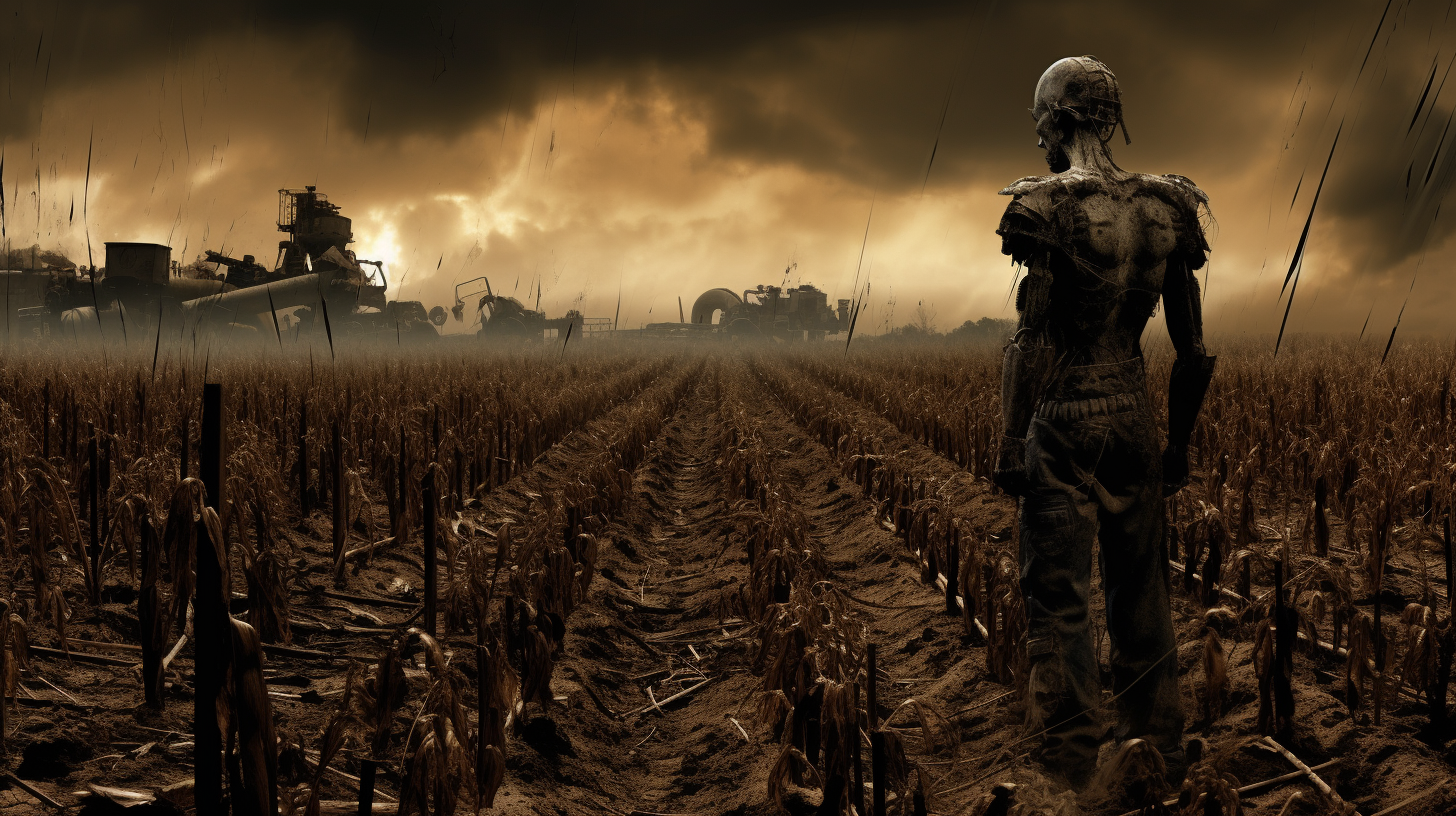It’s a grim scene: scorched earth where verdant fields once flourished, whispers of despair riding on dust-strewn winds—the stark reality of climate change gripping the planet’s breadbaskets. The narrative isn’t from a dystopian novel; it’s the unfolding chronicle of our world’s agricultural showdown. But as our harvests wither under the relentless assault of environmental degradation, a beacon of hope flickers from the realm of technological innovation. Can technology truly be our salvation?
Enter the arena of precision agriculture, farming’s future, or so the champions of technology would have us believe. Through a constellation of satellites to drones buzzing like metal bees over fields, data is the new yield skyrocketing out of the parched soil. It’s an agri-tech revolution, crafting an oasis of data points in a desert of uncertainty.
On the ground, soil sensors measure moisture levels with microscopic precision, whispering to the cloud when to unleash a drink upon the thirsty crops. Smart irrigation isn’t just a concept; it’s a reality that claims to slash water use and safeguard our supplies. But can technology hold back the relentless tides of change as weather patterns morph and water sources evaporate?
Farmers and agronomists are not the only frontliners in the textile trenches. Geneticists are wielding CRISPR like a scalpel, tailoring seeds to don the armor of resilience. Crops that once faltered in the face of drought are now engineered to endure. The genetically modified organisms (GMOs), once the subject of heated debate, now offer a compelling argument for survival.
Amidst these wonders of human ingenuity, vertical farms emerge like steel beanstalks in the city’s concrete jungle. Hydroponic systems circulate nutrient-rich solutions to plants stacked storey upon storey, defying gravity and depletion alike.
Yet, as we marvel at these technological marvels, a shadow looms. Nature, indomitable and fierce, has a way of surprising the most sophisticated systems. Pests evolve, diseases mutate, and the climate, that fickle beast, laughs at our hubris. The very technology we brandish as our shield may also serve as an accelerant to the problems we seek to solve. Concerns of unsustainable energy use, electronic waste, and the inequality of access have turned what should be a straight path to salvation into a complex labyrinth.
The digital and genetic artillery has, without doubt, fortified our crops against the relentless siege of environmental collapse. But this does not absolve us of the responsibility of stewardship. What food grows from the earth still requires a harmony with the ecosystem. The question lingers: as we plunge headfirst into the digital embrace, are we supporting life, or merely postponing the inevitable?
As we stand at this crossroads, pondering the future of food, society must weigh the balance with a heavy heart. We have, through our actions and inactions, kindled this fire that threatens to consume our sustenance.
Technology whispers promises of redemption, and we must be its cautious acolytes. To ensure that our planet continues to nourish us, we must harness these tools with wisdom and foresight. The challenge is not just to embrace technology but to intertwine it with the healing of the earth. To fashion not just smarter farms, but a wiser humanity. For it’s not merely crops under fire, but our future—can we tend the flame and temper the blaze?
